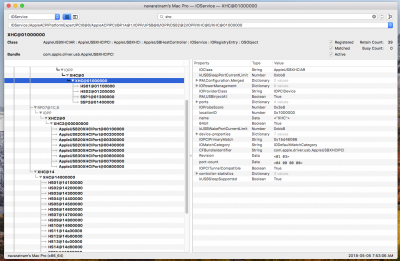- Joined
- Aug 17, 2017
- Messages
- 307
- Motherboard
- ASUS Prime X299 Edition 30
- CPU
- i9-10980XE
- Graphics
- RX 5700 XT
- Mac
- Mobile Phone
Sorry for the absence, I do not have much time as before now.
I would like to specify one thing: This is not a guide! But a starting point to solve a problem.
I performed a clean new installation and I took advantage of it to extract some information.
The solution to enable the hotplug for everyone is probably hidden here.
With the clean system I have inserted ONLY these minimal Arbitrary inject (First TB entry):

None SSDT!! Only Arbitrary!! In this way the values are the original ones and a comparison is possible.
And I saved these IORegs of my system:
Now, find the differences and we will find the solution to this problem for everyone (most likely).
For now I have "solved" my problem with method 2 of post #1, but I hope that soon there are new developments!
I would like to specify one thing: This is not a guide! But a starting point to solve a problem.
I performed a clean new installation and I took advantage of it to extract some information.
The solution to enable the hotplug for everyone is probably hidden here.
With the clean system I have inserted ONLY these minimal Arbitrary inject (First TB entry):
None SSDT!! Only Arbitrary!! In this way the values are the original ones and a comparison is possible.
And I saved these IORegs of my system:
- GC-Alpine Ridge with THB_C cable connected an device connected [NO hotplug]: IOReg GC-AplineRidge with THB_C cable.zip
- GC-Alpine Ridge without THB_C cable and without device connected: IOReg GC-AplineRidge without THB_C cable and device.zip
- GC-Alpine Ridge without THB_C cable and with device connected [FULL hotplug]: IOReg GC-AplineRidge without THB_C cable - with device.zip
Now, find the differences and we will find the solution to this problem for everyone (most likely).
For now I have "solved" my problem with method 2 of post #1, but I hope that soon there are new developments!
Attachments
Last edited:

